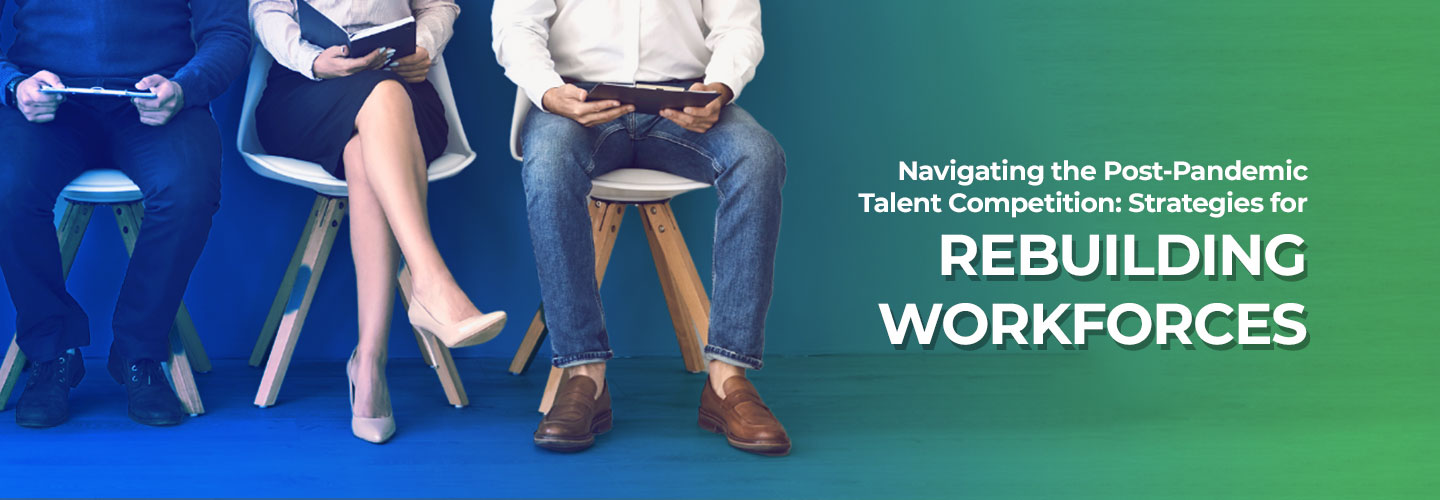
Amid the tumultuous phases of the COVID-19 pandemic in 2020, businesses faced unprecedented challenges, leading many to downsize their teams and halt recruitment efforts to weather the storm. As optimism gradually rekindles within the business sphere, a new challenge emerges: the uphill task of rebuilding workforces.
The economic rebound post-pandemic has triggered a surge in demand for skilled professionals. Yet, not all companies are equipped to navigate the fierce competition for top-tier talent. Many struggle to allure and retain prospective employees, sparking what's now coined as the "post-pandemic talent competition."
The intensification of this competition stems from the rapid currents of globalization, tightening the rivalry among companies. This exacerbates the quest for specialized talent while grappling with skill gaps, amplified by the looming threats of technology rendering certain roles obsolete. As the demand for skilled workers escalates, companies find themselves locked in a talent war, unable to match the demand with adequate supply.
Furthermore, investing in talent development and internal leadership initiatives is essential. To navigate heightened competition, companies must nurture and retain their talent pool by providing comprehensive training, identifying potential leaders, and fostering growth opportunities.
The pandemic has revolutionized work methodologies, with many companies embracing remote work models, transcending geographical boundaries in talent acquisition. However, this shift also implies heightened global competition among companies vying for the best talent.
So, how do companies navigate this post-pandemic talent battleground? Primarily, by fortifying their brand as an enticing workplace. This involves nurturing a robust company culture, offering enticing benefits, and fostering avenues for career growth. The more appealing the company, the better the chances of attracting top talent.
Additionally, strategic planning becomes paramount. Companies must allocate resources wisely, fortify internal cohesiveness, communicate effectively with recruitment partners, and engage in talent mapping. This approach allows companies to identify potential high-performing candidates from competing entities to tap into when recruiting.
Recruitment in the post-pandemic era is a daunting task. The focus is on efficiently concluding the process with optimal outcomes.

Amid the tumultuous phases of the COVID-19 pandemic in 2020, businesses faced unprecedented challenges, leading many to downsize their teams and halt recruitment efforts to weather the storm. As optimism gradually rekindles within the business sphere, a new challenge emerges: the uphill task of rebuilding workforces.
The economic rebound post-pandemic has triggered a surge in demand for skilled professionals. Yet, not all companies are equipped to navigate the fierce competition for top-tier talent. Many struggle to allure and retain prospective employees, sparking what's now coined as the "post-pandemic talent competition."
The intensification of this competition stems from the rapid currents of globalization, tightening the rivalry among companies. This exacerbates the quest for specialized talent while grappling with skill gaps, amplified by the looming threats of technology rendering certain roles obsolete. As the demand for skilled workers escalates, companies find themselves locked in a talent war, unable to match the demand with adequate supply.
Furthermore, investing in talent development and internal leadership initiatives is essential. To navigate heightened competition, companies must nurture and retain their talent pool by providing comprehensive training, identifying potential leaders, and fostering growth opportunities.
The pandemic has revolutionized work methodologies, with many companies embracing remote work models, transcending geographical boundaries in talent acquisition. However, this shift also implies heightened global competition among companies vying for the best talent.
So, how do companies navigate this post-pandemic talent battleground? Primarily, by fortifying their brand as an enticing workplace. This involves nurturing a robust company culture, offering enticing benefits, and fostering avenues for career growth. The more appealing the company, the better the chances of attracting top talent.
Additionally, strategic planning becomes paramount. Companies must allocate resources wisely, fortify internal cohesiveness, communicate effectively with recruitment partners, and engage in talent mapping. This approach allows companies to identify potential high-performing candidates from competing entities to tap into when recruiting.
Recruitment in the post-pandemic era is a daunting task. The focus is on efficiently concluding the process with optimal outcomes.